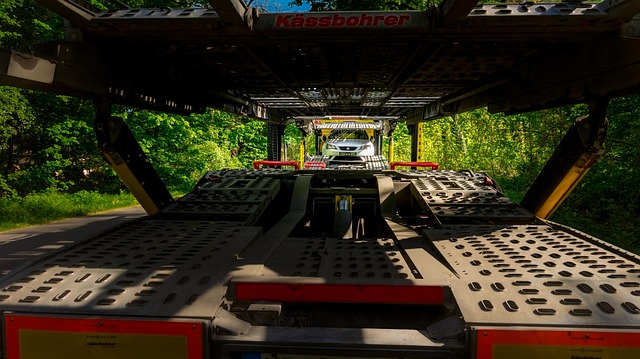Registering a car in California involves understanding specific requirements and gathering essential documents. Before you begin, ensure you have all necessary papers for a smooth process. This guide will walk you through it step-by-step, focusing on crucial aspects like Vehicle Identification Number (VIN) verification. Learn how to complete the online or in-person registration process, pay fees, and obtain license plates, making your car officially registered in California.
- Understand California Car Registration Requirements
- Gather Necessary Documents for VIN Verification
- Perform Vehicle Identification Number (VIN) Check
- Complete Online or In-Person Registration Process
- Pay Registration Fees and Obtain License Plate
Understand California Car Registration Requirements

Before registering your car in California, it’s crucial to understand the state’s specific requirements. One key step is ensuring accurate and up-to-date information, starting with a valid Vehicle Identification Number (VIN) verification. This process confirms the vehicle’s make, model, year, and other critical details. In California, this VIN verification is mandatory for all car registrations.
Additionally, having a reliable mobile vin verification or using a mobile vin inspector can simplify the process. These services allow you to quickly validate your car’s information, ensuring compliance with California’s registration standards. This not only saves time but also helps prevent potential issues during the registration process.
Gather Necessary Documents for VIN Verification

Before heading to the California Department of Motor Vehicles (DMV) or any authorized service center for registration, ensure you have all the essential documents ready. One crucial piece is the Vehicle Identification Number (VIN) verification report. This process involves gathering information specific to your vehicle, including its make, model, year, and unique VIN. A mobile vin verification or inspection service can assist in this step by providing a convenient and efficient way to obtain these details.
For a smooth registration process, have your vehicle’s title, registration documents from the previous state (if applicable), proof of insurance, and identification with you. Additionally, some services offer mobile vin verifiers who can come to your location to perform the VIN verification, saving you time and effort.
Perform Vehicle Identification Number (VIN) Check

Before registering your car in California, it’s crucial to perform a Vehicle Identification Number (VIN) check. This step is essential for ensuring that the vehicle you’re planning to register is legitimate and hasn’t been reported stolen or has any outstanding issues. You can conduct a VIN verification through various official channels, including online databases and local law enforcement agencies.
A mobile vin inspection or verification service might be particularly convenient for this process. Many reputable companies offer these services, allowing you to check your vehicle’s history from the comfort of your own home or even while you’re on the go. This approach can save you time and effort compared to traditional methods, ensuring a smoother registration experience in California.
Complete Online or In-Person Registration Process

In California, registering a car involves either completing an online or in-person process, depending on your preference and circumstances. The first step for both methods is to ensure your vehicle meets all legal requirements, including emissions standards. Once your car passes inspection, you’ll need to gather essential documents, such as proof of insurance, a valid driver’s license, and the vehicle’s registration from its previous owner. For added convenience, many Californians opt for the mobile vin verification or vin inspection process, where a professional inspector comes to your location to complete the necessary checks using their specialized equipment.
For online registration, you’ll access the California Department of Motor Vehicles (DMV) website and follow the step-by-step guide. This involves inputting detailed information about your vehicle, including its make, model, and year, along with your personal data. Alternatively, in-person registration requires visiting a local DMV office where an agent will assist you throughout the process. Regardless of the method chosen, completing the vin verification is crucial to ensure the vehicle’s history and authenticity.
Pay Registration Fees and Obtain License Plate

After completing your vehicle’s registration application, it’s time to pay the necessary fees. The California Department of Motor Vehicles (DMV) outlines the charges, which typically include a base fee and potentially additional costs based on your vehicle type or age. Payment can be made online, by mail, or in person at a DMV field office. Once your payment is processed, you’ll receive confirmation and can proceed with obtaining your license plates.
Obtaining license plates involves submitting the required paperwork, including proof of insurance and identification. The DMV will issue your vehicle’s license plates, which display a unique California registration number. If you prefer a faster and more convenient option, consider using a mobile vin inspection or mobile vin verification service to streamline the process. These services, provided by specialized companies, offer on-demand vehicle inspections and plate issuance, potentially saving you time and effort compared to traditional methods.
Registering a car in California involves understanding state requirements, gathering essential documents for VIN verification, completing either an online or in-person registration process, paying relevant fees, and obtaining license plates. By diligently navigating these steps, you’ll ensure your vehicle’s legal status and hit the roads with confidence. Don’t forget to conduct a thorough VIN check as a critical initial step in the process.
